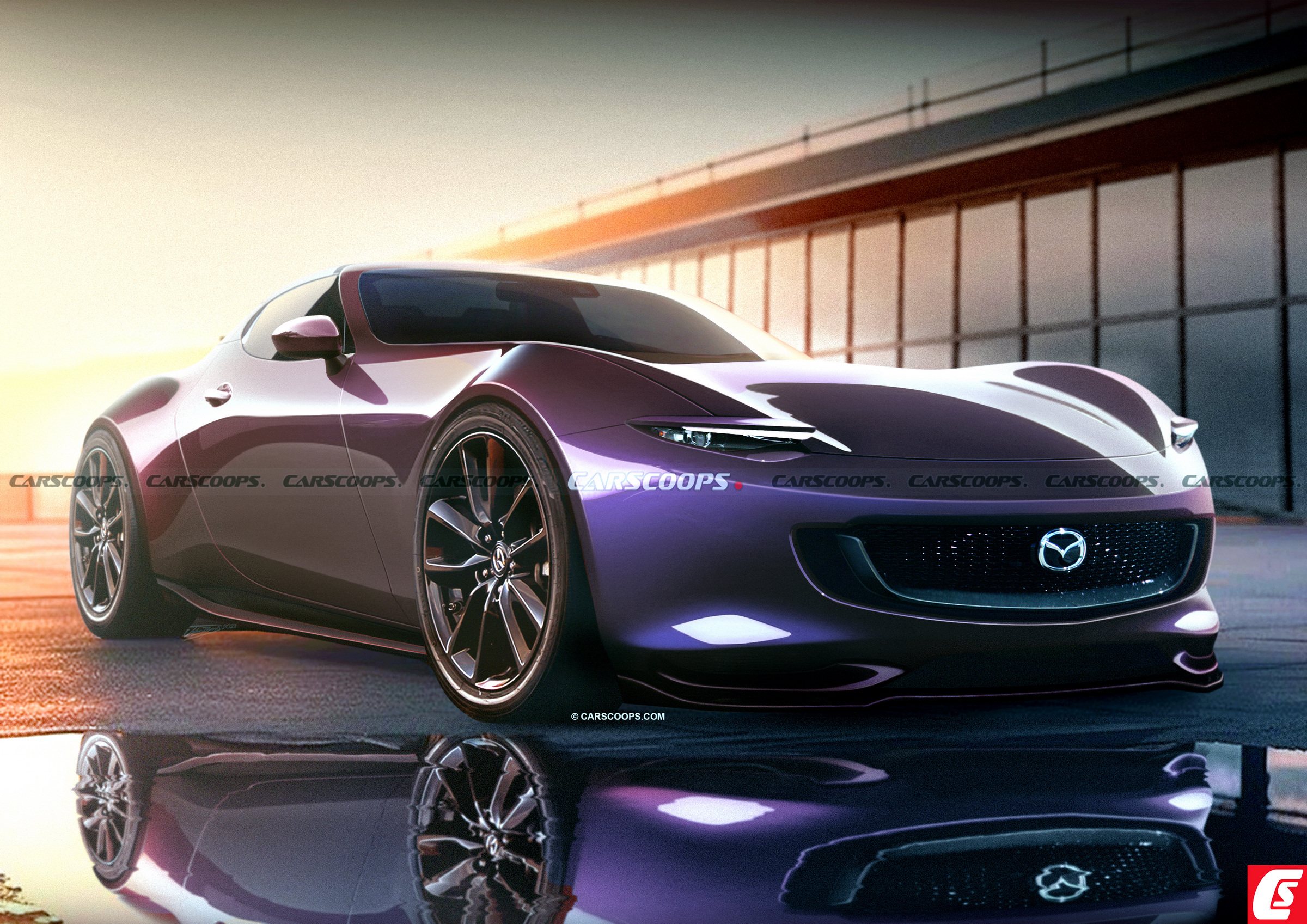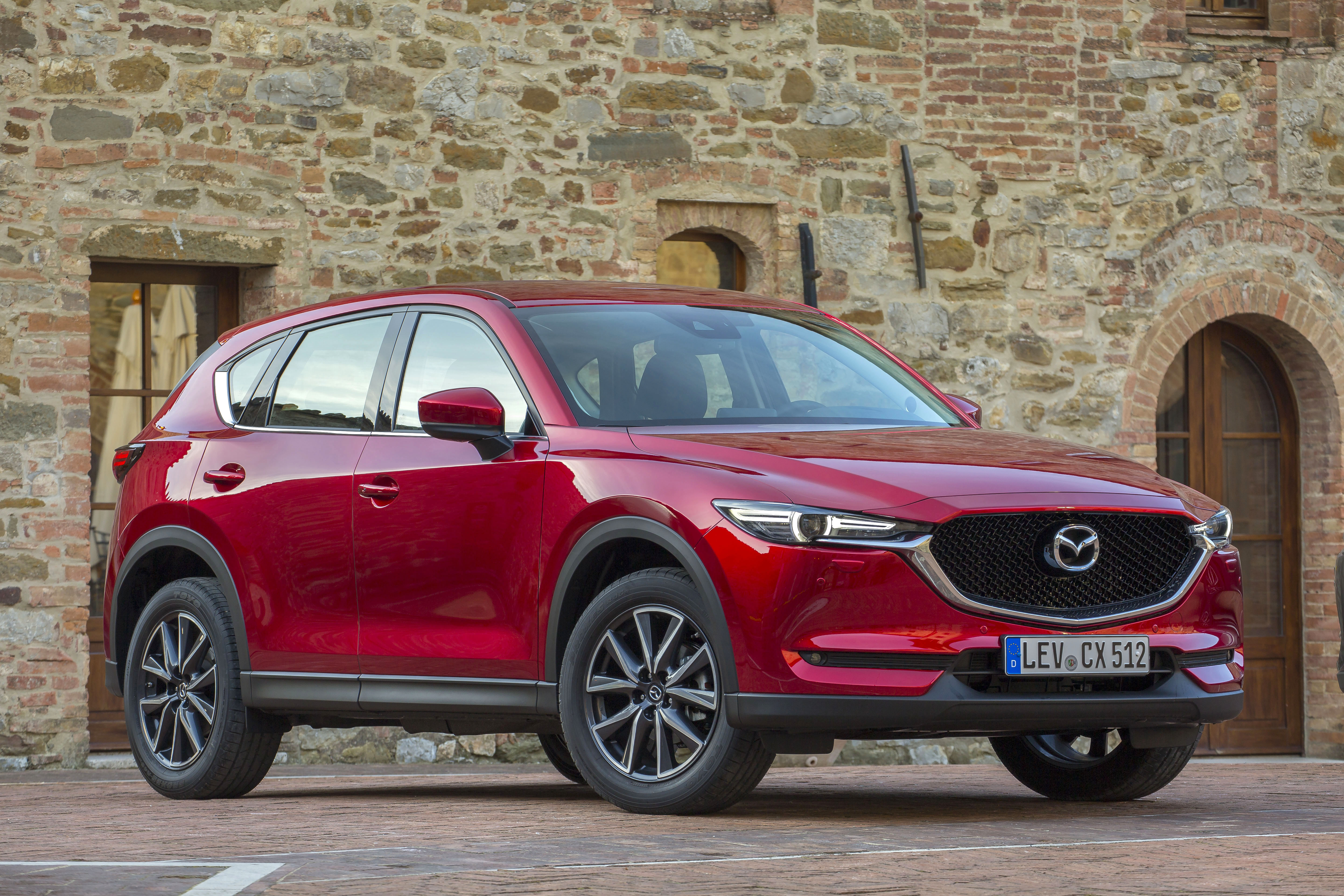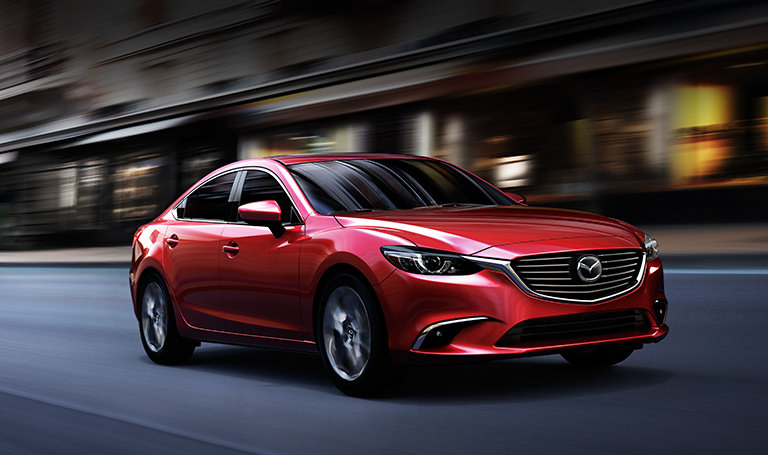Mazda Pickup Trucks For Sale: Your Comprehensive Guide to Finding the Perfect Workhorse cars.truckstrend.com
For decades, Mazda pickup trucks have carved out a reputation for reliability, durability, and surprising versatility. While perhaps not as ubiquitous as their Ford or Toyota counterparts in some markets, Mazda pickups, particularly the venerable B-Series and the more modern BT-50, have been beloved by owners who value a no-nonsense, hard-working vehicle that offers excellent value for money. Whether you’re a tradesperson needing a dependable workhorse, an outdoor enthusiast looking for an off-road companion, or simply seeking an affordable and practical daily driver, delving into the world of Mazda pickup trucks for sale can unearth some genuine gems.
This comprehensive guide aims to equip you with all the knowledge needed to navigate the market for Mazda pickup trucks. We’ll explore their history, diverse models, key considerations for buying used, and provide practical advice to help you make an informed purchase.
Mazda Pickup Trucks For Sale: Your Comprehensive Guide to Finding the Perfect Workhorse
The Enduring Appeal of Mazda Pickups
Mazda’s journey in the pickup truck segment began long ago, with early models establishing a foundation of ruggedness and utility. Their philosophy centered on building vehicles that were efficient, reliable, and capable, often leveraging strong partnerships to enhance their offerings.
The most iconic Mazda pickup for many is the B-Series. Spanning several generations from the 1960s through the early 2000s (in various markets), the B-Series became synonymous with honest, straightforward utility. These trucks, often sharing platforms and components with Ford Rangers (especially in North America from the 1990s onwards), offered a winning combination of compact dimensions, respectable payload and towing capacities, and legendary longevity. Their simple mechanicals made them relatively easy to maintain and repair, contributing to their enduring popularity in the used market.
More recently, Mazda’s global pickup offering has been the BT-50. Launched in 2006, the first two generations of the BT-50 were developed in collaboration with Ford, sharing the robust underpinnings of the Ford Ranger (T6 platform). This partnership brought modern features, improved safety, and more powerful engine options to Mazda’s truck lineup. The latest, third-generation BT-50, introduced in 2020, marks a new collaboration, this time with Isuzu, adopting the platform of the highly regarded Isuzu D-Max. This shift further enhances its reputation for reliability, off-road capability, and comfort.
The appeal of Mazda pickups for sale today lies in several key areas:
- Reliability: Many older B-Series trucks are still running strong, a testament to their robust engineering.
- Affordability: Used Mazda pickups often represent excellent value compared to competitors.
- Utility: They offer practical hauling and towing capabilities for their size.
- Simplicity: Especially the older models, which are often easier and cheaper to maintain.
- Distinctiveness: While some shared platforms, Mazda’s unique styling and driving dynamics give them a distinct character.

Understanding the Mazda Pickup Lineup

When searching for Mazda pickup trucks for sale, you’ll primarily encounter two main families: the classic B-Series and the modern BT-50.
1. The Mazda B-Series: Vintage & Classic Utility
The B-Series is where Mazda’s pickup legacy truly shines. These trucks were produced in various forms for decades, evolving from basic work trucks to more refined compact pickups.
- Key Characteristics: Known for their simplicity, robust ladder frames, and range of reliable four-cylinder engines (and some V6 options, particularly in later Ford Ranger-based models). They were offered in regular cab, extended cab (Freestyle Cab), and sometimes crew cab configurations, with both 2WD and 4WD options.
- Years: While early models date back to the 1960s, the most commonly found B-Series trucks for sale in North America are from the 1980s, 1990s, and early 2000s. The 1994-2009 models, in particular, are essentially rebadged Ford Rangers, benefiting from widespread parts availability and a large enthusiast community.
- Why Buy:
- Affordability: Excellent entry-level price point for a pickup.
- Reliability: Many can still perform daily tasks with minimal fuss.
- Maneuverability: Compact size makes them easy to park and navigate city streets.
- Customization: A vast aftermarket for parts and upgrades, especially for the Ranger-based models.
- Project Potential: Ideal for restoration, off-road builds, or a simple utility vehicle.
- Considerations:
- Age: Expect wear and tear, potential rust issues (especially in salt-prone regions), and age-related component failures.
- Safety Features: Lacking modern safety tech like airbags (in older models), ABS, or stability control.
- Comfort: Basic interiors, limited creature comforts.
- Payload/Towing: While capable for their size, they won’t match full-size trucks.

2. The Mazda BT-50: Modern Utility & Comfort
The BT-50 represents Mazda’s contemporary approach to the pickup truck, designed for a global market that demands more refinement, power, and safety from their utility vehicles. Note that the BT-50 was never sold in North America.
- Key Characteristics: More powerful engines (turbodiesel options are common), more spacious and comfortable interiors, modern infotainment systems, and enhanced safety features. Available in single cab, freestyle cab (extended cab), and double cab (crew cab) configurations, with 2WD and robust 4WD systems.
- Generations:
- 1st Gen (2006-2011): Based on the Ford Ranger (J97U platform). A significant step up in size and capability from the B-Series.
- 2nd Gen (2011-2020): Also based on the Ford Ranger (T6 platform), but with distinctive "Kodo" design language elements. Offered a blend of workhorse capability with SUV-like comfort.
- 3rd Gen (2020-Present): A major shift, now based on the Isuzu D-Max. This generation emphasizes refined driving dynamics, a luxurious interior, and top-tier safety features, while maintaining its rugged capabilities.
- Why Buy:
- Modern Features: Bluetooth, touchscreen infotainment, advanced driver-assistance systems (ADAS) in newer models.
- Comfort & Refinement: More car-like driving experience, quieter cabins.
- Safety: Significantly improved crash protection and active safety features.
- Power & Capability: Stronger engines, higher towing and payload capacities.
- Off-Road Prowess: Excellent 4WD systems and ground clearance.
- Considerations:
- Market Availability: Exclusively sold in markets outside North America (e.g., Australia, New Zealand, Southeast Asia, South America, parts of Africa). Importing can be complex and expensive.
- Pricing: Newer BT-50 models command higher prices, especially the feature-rich top trims.
- Maintenance: More complex systems mean potentially higher repair costs than older B-Series.
Where to Find Mazda Pickup Trucks For Sale
Locating a Mazda pickup for sale requires a targeted approach, especially for specific models or generations.
- Online Marketplaces:
- General Automotive Sites: AutoTrader, Cars.com, Edmunds, Kijiji (Canada), Gumtree (Australia/UK) are excellent starting points for both B-Series and BT-50 (in relevant markets).
- Auction Sites: eBay Motors often lists older B-Series models, and local salvage or government surplus auctions might have hidden gems.
- Social Media: Facebook Marketplace and dedicated Mazda truck enthusiast groups are fantastic resources for private sales and community knowledge.
- Dealerships:
- Used Car Dealerships: Many general used car lots will have B-Series trucks, especially if they are common in your region.
- Mazda Dealerships (outside North America): For the BT-50, new and used models will be available at authorized Mazda dealers in countries where they are sold.
- Private Sellers: Often found through online classifieds, local bulletin boards, or word-of-mouth. Buying privately can offer better prices but requires more due diligence.
- Specialty Classic Car Dealers: For meticulously maintained or restored older B-Series trucks, these dealers might be an option, though prices will be higher.
Key Considerations When Buying a Used Mazda Pickup
Purchasing any used vehicle requires careful inspection, and Mazda pickups are no exception.
- Condition Assessment:
- Rust: Crucial for older B-Series. Check the frame, rocker panels, wheel wells, bed, and cab mounts. Surface rust is manageable; frame rust can be a deal-breaker.
- Engine: Listen for unusual noises (knocks, ticks), look for smoke from the exhaust (blue/white/black), and check for fluid leaks. Ensure a smooth idle and strong acceleration.
- Transmission: Check for smooth shifts (automatic) or clutch feel (manual). Test all gears, including reverse.
- Suspension & Steering: Look for worn bushings, leaky shocks, and listen for clunks over bumps. Check for excessive play in the steering.
- Brakes: Ensure firm pedal feel, no pulling, and no grinding noises.
- Tires: Check tread depth and even wear.
- Electrical: Test all lights, wipers, power windows, radio, and HVAC.
- Maintenance History: Ask for service records. A well-documented history indicates a cared-for vehicle.
- Mileage vs. Condition: High mileage isn’t always a red flag if the truck has been meticulously maintained. Conversely, low mileage on an old truck might mean it sat for long periods, leading to dry rot or other issues.
- Purpose: Define your primary use. A basic B-Series might be perfect for occasional hauling, while a BT-50 is better suited for daily driving, long trips, or serious off-roading.
- Budget: Factor in not just the purchase price, but also insurance, registration, potential immediate repairs, and ongoing maintenance.
- Test Drive: Always take the truck for an extended test drive on various road types. Pay attention to how it handles, accelerates, brakes, and sounds.
- Pre-Purchase Inspection (PPI): Highly recommended, especially for older or higher-mileage vehicles. A trusted mechanic can identify issues you might miss.
Tips for a Smooth Purchase
- Research Thoroughly: Understand the common issues for the specific model year you’re considering.
- Set a Realistic Budget: And stick to it. Account for potential repairs or upgrades.
- Be Patient: The right truck might not appear immediately.
- Negotiate: Most used car prices are negotiable.
- Check VIN History: Use services like CarFax or AutoCheck (where available) to check for accidents, salvage titles, or odometer tampering.
- Understand Local Regulations: Be aware of emission testing, safety inspections, and registration requirements in your area.
Potential Challenges and Solutions
- Parts Availability (Older B-Series): While many components for the Ford Ranger-based B-Series are common, some specific Mazda parts might be harder to find.
- Solution: Utilize aftermarket parts suppliers, online forums, junkyards, and specialized Mazda parts dealers.
- Rust: A common enemy for older trucks, especially those from rust-belt regions.
- Solution: Thorough pre-purchase inspection. For minor surface rust, consider rust conversion and protective coatings. For extensive structural rust, it might be best to walk away or factor in significant repair costs.
- Lack of Modern Features (Older Models): Older B-Series trucks lack Bluetooth, backup cameras, or power accessories.
- Solution: Aftermarket upgrades can add modern conveniences like a new stereo with Bluetooth, a backup camera, or even power window kits.
- Market Scarcity (Certain Models/Regions): Finding a specific configuration or a BT-50 in a non-BT-50 market can be tough.
- Solution: Expand your search radius, be prepared to travel, or consider importing (with full understanding of the legal and financial implications).
Mazda Pickup Trucks For Sale: Approximate Price Guide
Please note that these are approximate price ranges in USD and can vary dramatically based on location, condition, mileage, trim level, 2WD/4WD, manual/automatic transmission, and specific market demand. This table is for general guidance only.
| Model | Approx. Year Range | Condition: Fair | Condition: Good | Condition: Excellent | Notes/Factors Affecting Price |
|---|---|---|---|---|---|
| Mazda B-Series (Older) | 1980s – early 1990s | $1,500 – $3,500 | $3,500 – $6,000 | $6,000 – $10,000+ | Primarily for enthusiasts, basic work trucks, or restoration projects. Rust, engine condition are key. Often carbureted. |
| Mazda B-Series (Ford Ranger-based) | 1994 – 2009 | $2,500 – $5,000 | $5,000 – $8,000 | $8,000 – $15,000+ | Most common B-Series. Prices vary greatly by mileage, engine (4-cyl vs. V6), 2WD/4WD, and region. Well-maintained examples hold value. |
| Mazda BT-50 (1st Gen) | 2006 – 2011 | $7,000 – $12,000 | $12,000 – $18,000 | $18,000 – $25,000+ | (Not in NA) Based on Ford Ranger. Prices depend heavily on market, mileage, diesel vs. petrol, and specific trim. |
| Mazda BT-50 (2nd Gen) | 2011 – 2020 | $10,000 – $18,000 | $18,000 – $28,000 | $28,000 – $35,000+ | (Not in NA) Also Ford Ranger-based, with more modern styling and features. Higher trim levels (e.g., GT, XTR) command premium prices. |
| Mazda BT-50 (3rd Gen) | 2020 – Present | $25,000 – $35,000 | $35,000 – $45,000 | $45,000 – $55,000+ | (Not in NA) Isuzu D-Max based. Still relatively new, so prices are higher. Dependent on trim level, accessories, and mileage. Top-spec models approach new truck prices. |
Conclusion
Mazda pickup trucks, from the venerable B-Series to the globally capable BT-50, represent a compelling option in the used truck market. They offer a unique blend of reliability, utility, and often, affordability that can be hard to match. Whether you’re seeking a basic work truck that can take a beating, a project vehicle to restore, or a modern, comfortable daily driver with serious capability, Mazda has likely produced a pickup that fits your needs.
By understanding the distinct characteristics of each model line, knowing where to search, and diligently assessing any potential purchase, you can successfully navigate the market for Mazda pickup trucks for sale and drive away with a vehicle that will serve you faithfully for years to come. Their enduring legacy of dependability makes them a smart choice for those who value practicality and longevity above all else.
Frequently Asked Questions (FAQ) About Mazda Pickup Trucks For Sale
Q1: Are Mazda pickup trucks reliable?
A1: Generally, yes. Mazda has a strong reputation for reliability, and their pickup trucks, especially the B-Series and the BT-50 (regardless of its Ford or Isuzu platform), are known for their robust build quality and durable powertrains. Proper maintenance is key to their longevity.
Q2: Why did Mazda stop selling pickups in North America?
A2: Mazda discontinued the B-Series (which was a rebadged Ford Ranger) in North America after the 2009 model year. This was largely due to declining sales in the compact truck segment and a strategic decision to focus on their passenger cars and SUVs, which were more popular in that market. The BT-50 was designed for global markets and was never officially sold in the US or Canada.
Q3: What’s the difference between a Mazda B-Series and a Ford Ranger from the same era?
A3: For the 1994-2009 model years in North America, the Mazda B-Series trucks were mechanically identical to the Ford Ranger, built on the same assembly lines with the same engines, transmissions, and chassis components. The primary differences were cosmetic, limited to grilles, headlights, taillights, badges, and sometimes minor interior trim variations. This means parts availability for these models is excellent.
Q4: Can I import a BT-50 into the US or Canada?
A4: Importing a BT-50 into the US or Canada is generally complex and expensive due to strict import regulations (e.g., the 25-year rule for the US). Unless the vehicle is older than 25 years (for the US) and meets specific criteria, it’s very difficult and costly to make it street-legal. For most buyers in North America, importing a BT-50 is not a practical option.
Q5: Are parts expensive for Mazda pickups?
A5: For the B-Series (especially the Ford Ranger-based models), parts are generally affordable and widely available, often interchangeable with Ford Ranger parts. For the BT-50 (outside North America), parts availability and cost will depend on the specific generation and region, but generally, they are comparable to other modern pickups in their respective markets. Older, more obscure Mazda-specific parts for very early B-Series models might be harder to source.
Q6: What should I look for regarding rust on an older Mazda B-Series?
A6: Rust is a major concern for older B-Series trucks, especially in areas with road salt. Key areas to inspect include the frame rails (particularly near the rear axle and suspension mounts), rocker panels, cab corners, wheel arches, bed floor, and tailgate. Surface rust is manageable, but extensive rust on structural components (like the frame) can compromise safety and lead to costly repairs, making the truck a poor investment.

